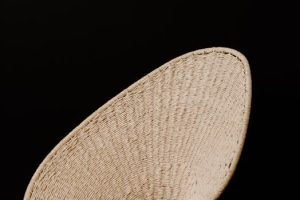Digital Heritage Platforms Showcase Global Fashion History
The fashion industry has undoubtedly evolved over the years, constantly adapting to changing trends and technologies. With the rise of digital platforms, the industry has been able to showcase its rich history and heritage to a global audience. Digital heritage platforms have emerged as a virtual treasure trove for fashion enthusiasts, allowing them to delve into the past and explore the evolution of fashion across cultures and centuries.
Uncovering Global Fashion History
As we navigate through the world of fashion, it is fascinating to learn how certain trends and styles have originated and evolved over time. Thanks to digital heritage platforms, this journey has now become much easier and more accessible. These platforms serve as digital archives, housing a vast collection of images, videos, and information related to fashion history.
One such platform is the Google Arts & Culture, which has collaborated with over 500 museums and fashion institutions worldwide to showcase their collections to a global audience. This platform offers virtual tours of iconic fashion exhibitions, as well as in-depth articles and archives that document the evolution of fashion through the ages.
From Runways to Digital Screens
The fashion industry is known for its extravagant and exclusive events, where designers showcase their latest collections on the runway. These events are usually limited to a select audience, but with the help of digital heritage platforms, these fashion shows can now be seen by anyone, anywhere. Platforms like Vogue Runway and Fashion Week Online stream live fashion shows from around the world, giving viewers a front-row seat to the latest trends and designs.
This accessibility also extends to the archives of these fashion shows, allowing users to revisit their favorite collections and delve into the inspiration behind each designer’s work. This has not only made the industry more transparent but also serves as a source of inspiration for aspiring designers and fashion enthusiasts.
Preserving Fashion History for Future Generations
Digital heritage platforms are not just limited to showcasing fashion history, but they also play a crucial role in preserving it for future generations. With the help of high-resolution images and cutting-edge technology, these platforms are able to digitally preserve rare and delicate pieces of clothing that may otherwise deteriorate over time.
Google’s We Wear Culture project is a prime example of this, with over 450 pieces from the Museum at the Fashion Institute of Technology (MFIT) being digitized and made available for the public to explore. This project not only allows for the documentation and preservation of fashion history but also promotes cultural diversity by showcasing fashion from different parts of the world.
The Impact of Digital Heritage Platforms
The accessibility and convenience of digital heritage platforms have had a significant impact on the fashion industry. It has opened up new avenues for education, inspiration, and exposure, making fashion history accessible to a global audience. These platforms have also bridged the gap between the fashion industry and its audience, making it more transparent and inclusive.
Furthermore, digital heritage platforms have also played a crucial role in promoting sustainable fashion. With the ability to access past collections and discover the evolution of fashion, people are becoming more aware of the harmful effects of fast fashion and the importance of sustainable practices.
Final Thoughts
Digital heritage platforms have transformed the way we perceive and access fashion history. By harnessing the power of technology, these platforms have made fashion more inclusive, transparent, and educational. As we continue to embrace the digital age, the impact of digital heritage platforms on the fashion industry is only set to grow, enriching our understanding and appreciation of global fashion history.











